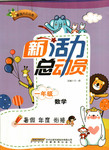题目内容
—I can never forget the days we spent together in the summer camp.
—Well, especially the day it suddenly began to rain in the middle of the night.
A. when; when B. which; when
C. what; that D. on which; when
B
【解析】
试题分析:考查定语从句。本题两空都引导定语从句, 第一空在从句中作spent的宾语, 用that/which; 第二空在从句中作状语, 用 when。句意: ——我永远不会忘记我们在夏令营一起 度过的日子。——噢, 尤其是午夜突然下雨的那天。故B正确。
考点:考查定语从句

练习册系列答案
 新活力总动员暑系列答案
新活力总动员暑系列答案 龙人图书快乐假期暑假作业郑州大学出版社系列答案
龙人图书快乐假期暑假作业郑州大学出版社系列答案
相关题目
 hat with his family, Tegan would han
hat with his family, Tegan would han